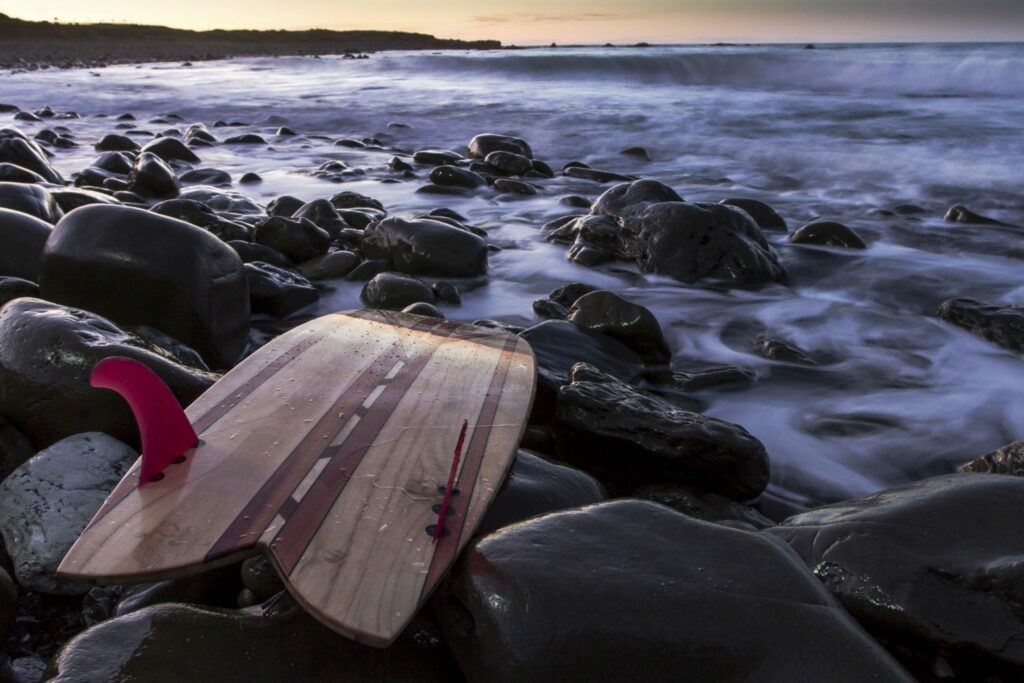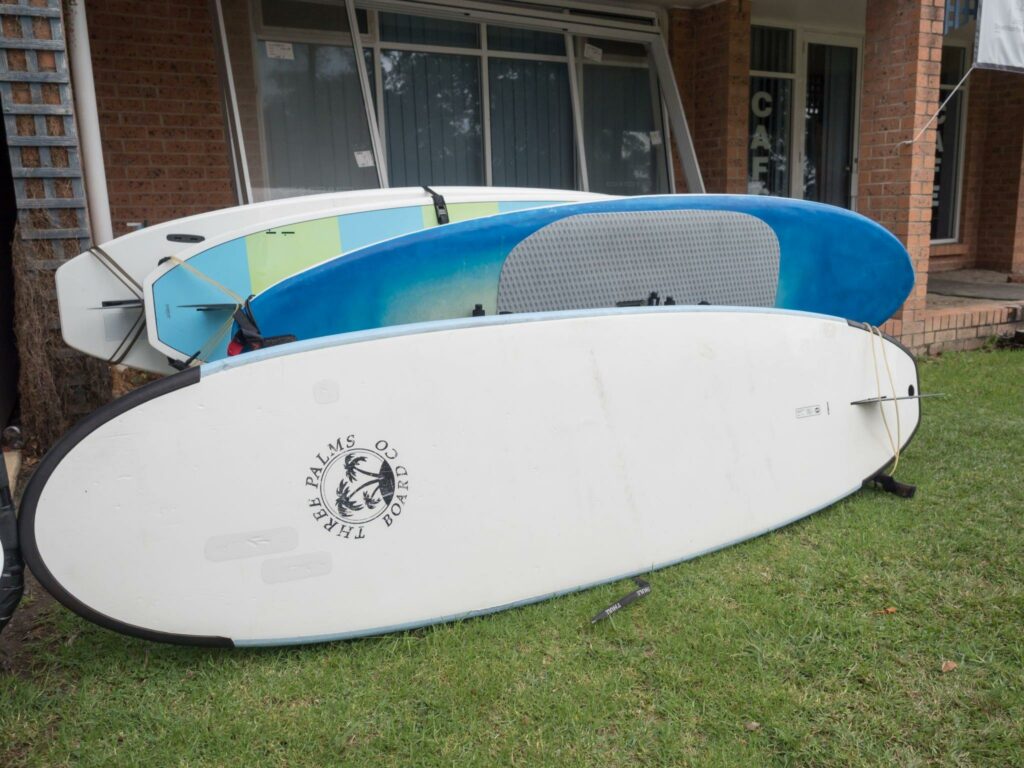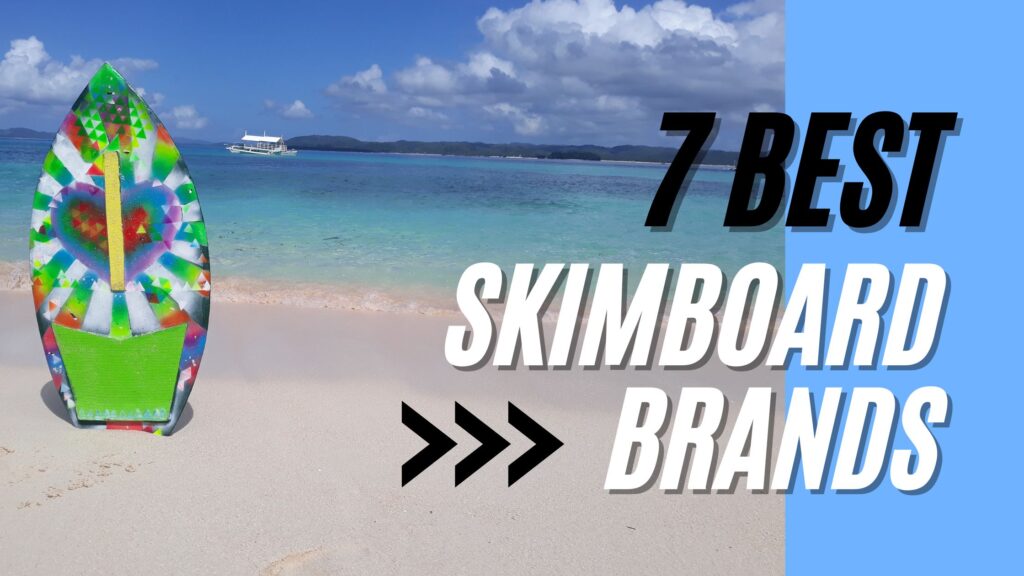In the world of water sports, skimboarding stands out as an accessible yet exhilarating activity. Whether you’re a seasoned participant or a newcomer venturing into this sport, a pivotal decision lies ahead – selecting the suitable board. Two prevalent materials dominate the skimboarding market: wooden and fiberglass boards. In this article, we will delve into the wooden skimboard vs fiberglass debate, objectively assessing whether wooden skimboards merit consideration.
In skimboarding, the choice of board material carries substantial significance. Wooden and fiberglass skimboards represent the primary alternatives. Our exploration aims to provide valuable insights, allowing you to make an informed decision.
To begin, we shall explore the qualities of wooden skimboards, followed by an examination of fiberglass counterparts. This comparative analysis will assist in determining the merits and limitations of each material, enabling you to select the optimal board to suit your preferences and requirements.
Wooden Skimboard vs Fiberglass – Quick Comparison
Speed and Maneuverability
When it comes to speed and agility, fiberglass skimboards have earned their reputation. They effortlessly glide across the water’s surface, making it a breeze for riders to catch waves and perform maneuvers with finesse. The smooth, sleek surface of fiberglass boards minimizes resistance, allowing you to experience an exhilarating ride.
In contrast, wooden skimboards, although sturdy, might not quite match the same level of speed and maneuverability. Their slightly heavier build and different surface characteristics can make them a bit less nimble when you’re out on the water.
Durability and Longevity
Now, let’s talk about durability and how long your board is likely to last.
Both wooden and fiberglass skimboards have their merits in terms of durability. They can handle their fair share of rough treatment. However, here’s where fiberglass boards often have the upper hand. They tend to be less susceptible to water damage, which can be a significant factor if you plan to spend extended hours in the waves. Fiberglass boards can withstand the rigors of frequent use and exposure to moisture, offering a longer-lasting investment.
In summary, fiberglass skimboards shine when it comes to speed and maneuverability, offering a thrilling ride. Meanwhile, both wooden and fiberglass boards are durable, but fiberglass boards often edge ahead in terms of longevity due to their water-resistant qualities. Your choice will ultimately depend on your riding style and how important these factors are to your skimboarding experience.
Why Choose Wooden Skimboards?

These boards exude a captivating charm that resonates with a wide spectrum of riders. One of their defining characteristics lies in their meticulous craftsmanship, often a result of skilled artisans who craft them by hand. This artisanal approach bestows upon each wooden board a one-of-a-kind, personalized touch, creating a sense of attachment and uniqueness for their owners.
Furthermore, the utilization of wood in their construction imparts a timeless and rustic aesthetic that finds favor among those who share an affinity for the great outdoors. The natural grains and textures of wood come together to create a visually appealing and harmonious blend with the beachy surroundings.
Advantages of Wooden Skimboards
Now, let’s talk about what sets wooden skimboards apart in terms of advantages.
Aesthetic Appeal: One notable advantage is their natural, earthy aesthetics. Wooden skimboards have a way of blending in with the beachy surroundings, offering a pleasing visual experience that many find appealing.
Customization: Another perk is the level of customization they offer. Many wooden skimboards can be tailored to match your style and preferences. This means you can have a board that not only performs well but also looks exactly how you want it to.
Durability: Despite their rustic appearance, wooden skimboards are pretty tough cookies. They can handle their fair share of rough handling, making them a reliable choice for riders who put their boards through the paces.
Limitations of Wooden Skimboards
Of course, no board is perfect, and wooden skimboards have their limitations too.
Weight: One thing to keep in mind is that wooden skimboards tend to be on the heavier side when compared to their fiberglass counterparts. This added weight can affect maneuverability, making it a bit trickier to glide smoothly across the water.
Water Absorption: Wood has a tendency to absorb water over time. While this might not be a big deal for a short beach session, extended exposure to water can lead to warping. So, if you’re planning on spending long hours in the surf, it’s something to consider.
In a nutshell, wooden skimboards offer a classic, customizable, and visually appealing option for riders who appreciate their unique charm. However, their weight and susceptibility to water absorption should be factored into your decision-making process based on your riding preferences and conditions.
Now, let’s shift our focus to fiberglass skimboards and see what makes them stand out.
Why Choose Fiberglass Skimboards?
First and foremost, fiberglass skimboards have their own set of attractions.

While wooden boards embrace a timeless and rustic allure, fiberglass skimboards offer a contrasting, modern, and sleek aesthetic. Their smooth and polished surfaces, often adorned with vibrant and captivating designs, cater to those with an inclination towards a contemporary visual appeal.
Fiberglass boards, with their glossy finishes and striking graphics, bring a sense of sophistication and style to the shoreline. These captivating designs not only catch the eye but also reflect the dynamic spirit of the sport, making them an enticing choice for riders who appreciate a fusion of functionality and fashion in their skimboarding experience.
Advantages of Fiberglass Skimboards
Let’s delve into the advantages of fiberglass skimboards.
Lightweight: One significant advantage is their lightweight construction. This characteristic enhances speed and maneuverability, allowing you to glide effortlessly across the water’s surface.
Durability: Fiberglass boards are known for their durability. They are less prone to water damage, making them a reliable choice for those looking for long-lasting performance.
Performance: When it comes to speed and agility, fiberglass skimboards excel. They offer a level of performance that can be particularly enticing to riders who enjoy performing tricks and maneuvers.
Limitations of Fiberglass Skimboards
Like any other choice, fiberglass skimboards have their limitations.
Cost: These boards often come with a higher price tag compared to their wooden counterparts due to the advanced manufacturing techniques and materials involved. While they offer impressive performance, their initial investment may be a deciding factor for budget-conscious riders. It’s essential to weigh the benefits against the cost when making your skimboard selection.
Less Customization: While wooden boards offer ample customization, fiberglass skimboards tend to have fewer options for personalization. So, if you have specific design preferences, this might be something to consider.
In summary, fiberglass skimboards bring a modern, sleek look to the table with lightweight design, durability, and high-performance capabilities. However, their cost and limited customization options should be weighed against their advantages when making your decision based on your riding style and priorities.
Making the Right Choice:
Choosing Based on Skill Level:
For Beginners: If you’re just starting out in the world of skimboarding, wooden skimboards often present a more forgiving choice. They provide stability and ease of use, which can be especially beneficial as you hone your skills. Wooden boards offer a bit more room for learning and building your confidence on the water.
For Advanced Riders: On the other hand, advanced skimboarders often lean toward fiberglass options. These boards are designed for precision and agility, making them the preferred choice for experienced riders looking to push the boundaries and execute intricate maneuvers with finesse.
Now, the critical question:
Are Wooden Skimboards Good, or is Fiberglass the Right Option?
The answer lies in your personal preferences, riding style, and objectives.
Wooden Skimboards: Wooden boards are indeed a good choice for those who appreciate quality craftsmanship and a touch of artistry in their board. They often showcase meticulous attention to detail, resulting in high-quality, unique boards. Moreover, if environmental consciousness is a priority for you, wooden skimboards align well with sustainability efforts due to their use of natural materials. You can read more about the difference between these 2 materials here.
Fiberglass Skimboards: Fiberglass boards excel in terms of performance, particularly in speed and maneuverability. If you’re seeking top-notch performance and enjoy executing tricks with precision, fiberglass is likely the right option for you.
In conclusion, the choice between wooden and fiberglass skimboards depends on your skill level and what you value most in your skimboarding experience.
Conclusion
In the ongoing debate between wooden skimboards and fiberglass counterparts, it’s important to recognize that there’s no universal solution. Each type of board brings its own distinct strengths to the table, catering to the preferences and needs of various riders.
Whether you opt for the timeless allure of a wooden skimboard or the high-performance capabilities of fiberglass, the ultimate goal remains the same – to have a blast and embrace the thrill of riding the waves with boundless enthusiasm. So, as you make your choice, remember that it’s not about finding a one-size-fits-all answer; it’s about selecting the board that aligns with your unique style and sets the stage for unforgettable adventures on the water.
I am Fornillos Bogs, a seasoned professional surfer and accomplished skimboarder originally from Tanauan, Leyte, Philippines. With a remarkable background in both sports, I have carved my niche in the aquatic world. Currently, I reside in Quezon City, Philippines, known for my exceptional skills on the waves and impressive performances in skimboarding competitions. My journey from the serene shores of Tanauan to the bustling city of Quezon City serves as an inspiring testament to my dedication and passion for riding the waves.


